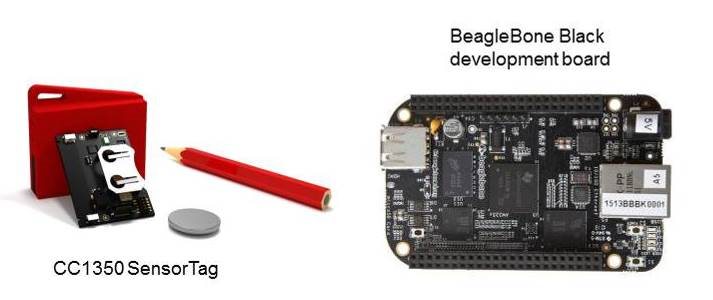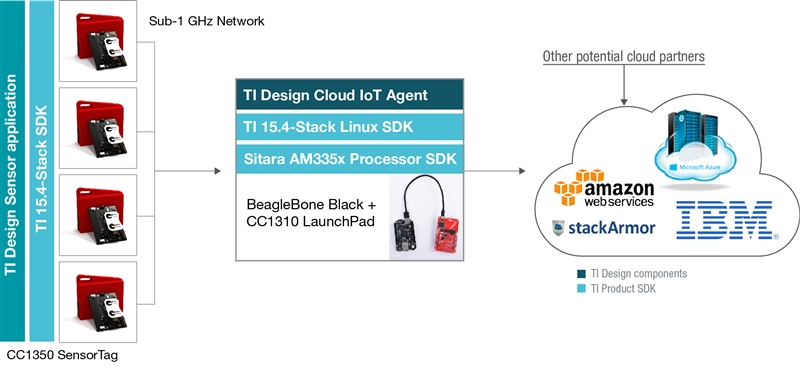SSZTAI3 december 2016 CC1310 , CC1350
The evolution of low-power wireless technologies has accelerated in the past few years due to the development of a number of applications for home and building automation, asset management and factory & process automation, as well as personal care, health and fitness. At the very heart of this innovation there is the ability to easily access and integrate a low-power sensor and its data. These sensors can now be designed in minuscule form factors, powered by a single wireless microcontroller (MCU), communicating over-the-air and running for years off of a small coin cell battery. With this, adding a sensing node to any existing installation becomes simple and inexpensive. This unleashes the potential for applications to collect and process information coming from the sensors, and display the data to the consumers, automate operations, make more sophisticated decisions autonomously or guide the end users in making them. Picture yourself at home: your connected thermostat which is collecting data from a temperature sensor and from the electric meter realizes you are running at the edge of the peak demand. It then takes an action to query the utility provider, and notifies you that electricity rates are increasing in the next hour, so it may be better to reduce the use of your air conditioning (AC).
Two macro-trends are noticeable from these applications:
- The sensor data needs to be ubiquitous, and always available. Whether users are in sensor proximity of a central digital hub, or the sensor data is relayed to a smartphone to be displayed, or being sent anywhere else connected through the Internet, the sensor data and functionality must always be available to the user all the time wherever they are.
- Sensors are sources of information or destinations for simple control commands. They must remain simple, low cost and power efficient. Data analytics, stimulation and processing of sensors happen instead as a cooperative effort between local gateways and cloud systems, leveraging the higher computing power and bigger resources available and distributed between the two. Consider for example a digital personal assistant, which needs to process language, recognize a face or speech balancing the load between engines in the cloud and locally, and at the same time combine sensor information and interact with them. Or, like in the example above with the connected thermostat, where temperature sensor data must be combined with instantaneous power and current electricity rates fetching data from the internet to present the users with a suggested action.
Cloud computing and Internet connected gateways are at the very core of these systems. They manage different sources of input, access databases and search for information, and consolidate the data coming from different sensors in ways that are useful and always available when needed. They are the two key components of an overarching system solution that incorporates battery operated sensors as end nodes to build compelling new services for the end user.
Scalability in terms of the number of devices, type of applications, and different set of services is one of the key requirements for these systems. Today this constitutes a big challenge because of the complexity to build and manage such large sensor networks, the proliferation of different cloud connectivity technologies and their services, and the different type of application requirements.
Consider for instance what Internet connected gateways should provide:
- They must be able to handle a large number of nodes and different types of connectivity interfaces to communicate with a variety of sensors (e.g. humidity, luminance, pressure, voltage, etc.)
- They must be able to send information to and from the cloud, interfacing with different cloud service providers which may have different classes of services
- They must be able to balance between local and cloud computing. For instance, think about the processing and database requirements of complex operations like language and face recognition.
Building an entire sensor-to-cloud platform, based on open, industry proven and publicly available standards is a response to the challenge of building a scalable and ubiquitous system that quickly enables those applications.
To this avail, TI has created the Sub-1 GHz Sensor-to-Cloud with gateway reference design. This reference design accelerates the time it takes to develop a cloud-based application that interacts with Sub-1 GHz sensors.
The sensors, running on TI’s popular SimpleLink™ dual-band CC1350 SensorTag kit (the first-ever created wireless sensor-board reference design), are using long range Sub-1 GHz technology and communicating with an Eth/Sub-1 GHz gateway running on BeagleBone Black using TI’s Sitara ™ AM335x processor.

Communication between sensors and the gateway is using the industry proven IEEE 802.15.4 ‘g’ standard, implemented in our royalty-free TI 15.4-Stack software development kit (SDK) offering, which features a software solution for managing a network of sensor nodes, includes an embedded Linux ® software for the gateway (the ‘digital hub’).
Built on top of the TI15.4-Stack and Sitara Processor SDK software foundation, TI created a reference JavaScript-based Internet of Things (IoT) gateway software module, to enable connectivity with the Amazon Web Services (AWS) cloud.
The IoT gateway application is a software reference design component which includes the following:
- Link and device monitoring control, for remote network management. Imagine you deployed a humidity sensor network in your winery, and want to check all your sensors are still operational and that last night storm didn’t break them.
- Standard data formatting, and object abstraction model for sensor data representation in the cloud. This is the core of the sensor-to-cloud application and it defines the format, the attributes and the properties of the humidity sensor data.
- Gateway - AWS IoT service communication, with security and authentication model. This defines the transport language between your gateway and the cloud service, and how your sensors are authenticated and secured through the gateway with the cloud service provider.
All the features above mentioned have been designed with scalability in mind, and are based on industry standards.
- Data representation uses JavaScript Object Notation (JSON),
- Sensor object model is taken from the IPSO Smart Object specification
- Communication with AWS IoT instance uses the publish/subscribe MQTT protocol, a popular choice for cloud services that interface with sensor-based embedded devices.
Software components in this design are modular, and the interfaces between them are based on TCP sockets and use Google Protobuf data model, providing the ability to expand on additional APIs and interface with other IP-based cloud connectivity protocols. This allows to very quickly scale and port the gateway IoT agent software to connect with other popular cloud services or quickly add any additional type of sensor (e.g. luminance, pressure, temperature, etc.) giving great flexibility to the designer and allowing the re-use of popular software libraries available for free.

By combining design choices which are modular and revolve around the use of industry standards, building kits that are expandable with BoosterPack™ plug-in modules or capes and that are easily accessible to developers with software and designs available free of charge, TI wants to unleash the innovation spirit of the developers. We bring to the industry a complete and scalable sensor-to-cloud reference platform. It’s now time for developers to turn this into the next innovative IoT application. www.ti.com/sensor2cloud
Attending CES 2017? Stop by the TI booth at the Venetian, Lvl 2 - Titian 2202 to see sensor-to-cloud reference design in action.
Get started today!
- Download the Sensor-to-cloud reference design.
- Order the kits: